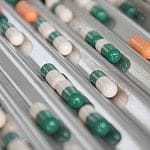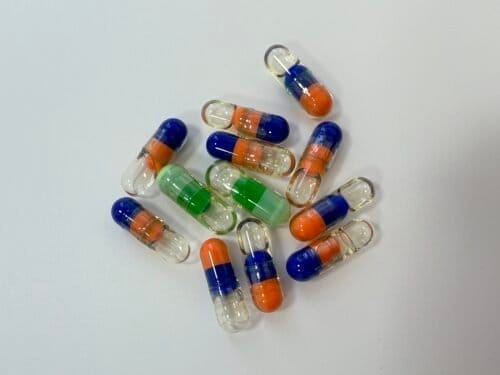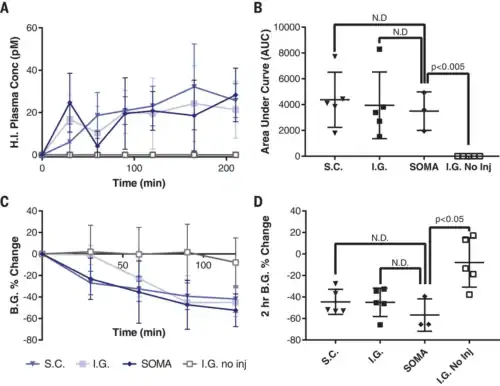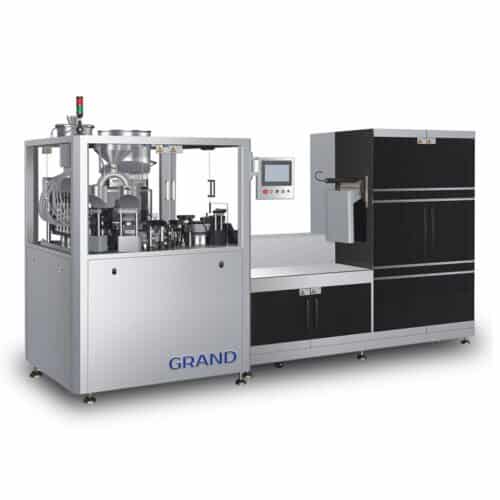
Your Machine is Ready: Inside Candy Packaging Machine Fast & Safe Shipping Process

How to Choose an Automatic Capsule Filling Machine?
Liquid capsules replace injections? | Oral liquid capsules | Grand
Introduction - Scientists Develop Latest Liquid Capsules
Biomacromolecule drugs are a key area of pharmaceutical development. In the 2020 global top 20 pharmaceutical sales list, biomacromolecules dominated, occupying 12 spots.
Macromolecule drugs such as insulin, antibodies, and proteins are often hydrolyzed by proteases in the gastrointestinal tract, making injection the primary method of administration for these drugs. Oral formulations are considered the "holy grail" of macromolecule drug delivery due to their ease of administration, enhanced chemical stability, and elimination of discarded needles. For example, since the first insulin injection for the treatment of diabetes in 1922, researchers have continuously explored oral insulin.

The laboratory of Robert Langer is a prime example of the many teams developing oral macromolecular drug delivery systems. Robert Langer, the David H. Koch Institute Professor at MIT (the highest honor an MIT professor can receive), has pioneered new fields in drug delivery systems and controlled-release technologies, earning him the title "Father of Drug Delivery." Since 1974, he has focused on developing methods for delivering macromolecules such as peptides, insulin, proteins, RNA, and DNA using materials like polymers, continuously striving to create various delivery vehicles and advance their practical application.
In 2015, Robert Langer's research group received funding from insulin giant Novo Nordisk and collaborated with scientists from Brigham and Women's Hospital and Novo Nordisk to develop oral delivery platforms for macromolecules like insulin.
The New Breakthrough: The L-SOMA System
Recently, the team published their latest breakthrough in Nature Biotechnology: the liquid self-orienting millimeter-scale applicator (L-SOMA).
The paper’s corresponding authors are Giovanni Traverso (an assistant professor at MIT and gastroenterologist at Brigham and Women's) and Ulrik Rahbek (a Vice President at Novo Nordisk).
The innovation is its ability to orally deliver liquid large-molecule drugs. This has increased the payload by an order of magnitude.

In pre-clinical trials, it successfully delivered clinical doses of four biologics: adalimumab, a GLP-1 analog, recombinant human insulin, and epinephrine.
The researchers showed this capsule could orally deliver monoclonal antibodies—drugs used to treat cancer, rheumatoid arthritis, and Crohn's disease.
“Although the system is still in the early stages of research, we believe it has the potential to transform the therapeutic landscape in multiple fields,” said Traverso.
“This research means that several drugs currently only available via injection may one day be taken orally. Our goal is to get this technology into clinical trials as soon as possible,” said Rahbek.

What is a Liquid-Filled Hard Capsule?
Let's clarify what a liquid hard capsule is.
A capsule is prepared by directly filling a liquid drug, or by dissolving or dispersing the drug in a suitable solvent. This creates a solution, suspension, or emulsion, which is then filled into a hollow capsule. This is also known as a liquid hard capsule.
This is the most common type of liquid capsule. In the pharmaceutical industry, factories and labs use automated equipment to get perfect, mass-produced liquid capsules.
For example, a Capsule filling machine from Grandpackmachine is a common example of this technology. While the drug formulation is key, the machine is what creates the final product.

L-SOMA: A Major Upgrade for Liquid Drug Delivery
This new L-SOMA is a major upgrade. Back in February 2019, Langer's team and Novo Nordisk, inspired by the leopard tortoise, developed the first SOMA (self-orienting millimeter-scale applicator).
That blueberry-sized capsule, detailed in Science, could "give an injection" to the stomach wall to deliver solid insulin.
SOMA (2019) vs. L-SOMA (2025)
The original SOMA could only deliver solid drugs, not liquids.
Liquid drugs can enter the bloodstream much faster. This is critical for drugs like insulin or epinephrine, which is used to treat allergic reactions.
The new L-SOMA has the same external shape, but its interior is completely redesigned to accommodate liquids.
A Leap in Dosage and Speed
The new design delivers a much larger liquid dose of approximately 4 milligrams.
The original SOMA could only deliver 300 micrograms. The new capsule holds about 13 times more payload.
The L-SOMA reached maximum plasma concentration just 30 minutes after dosing. It also achieved an absolute bioavailability of 80%. (For comparison, IV injection is 100%).
The Manufacturing Challenge: How to Fill Liquid Capsules?
This breakthrough highlights the huge advantage of liquid-filled capsules for dosage and delivery. But it also raises a critical manufacturing question:
How can you quickly and accurately fill these liquid capsules on a mass scale?
The Grandpackmachine Liquid Capsule Filling Machine NYF-1000 (production line) provides the answer.

It is a complete system that integrates filling, sealing, and drying into one continuous, high-speed liquid capsule production line.
The production line fills the capsule body with liquid. Then, it applies a micro-band of sealing solution to the cap-body join.
This process ensures the contents remain in a perfectly sealed state during transport and use. It dramatically improves product stability and safety.
Appendix: A Guide to Hard Capsule Sizes
Hard capsule models are classified by their capacity. The most common sizes are 0 through 5.
Here is a general capacity reference:
0#: ~0.75ml
1#: ~0.55ml
2#: ~0.40ml
3#: ~0.30ml
4#: ~0.25ml
5#: ~0.15ml
Note: Soft-gel and enteric-coated capsules may not follow these exact rules and are designed based on specific drug requirements. Capsules are generally divided into hard, soft, and enteric types, each with its own advantages.
References
- Alex Abramson et al., An ingestible self-orienting system for oral delivery of macromolecules.Science363,611-615(2019).DOI:10.1126/science.aau2277
- Abramson, A., Frederiksen, M.R., Vegge, A. et al. Oral delivery of systemic monoclonal antibodies, peptides and small molecules using gastric auto-injectors. Nat Biotechnol 40, 103–109 (2022). https://doi.org/10.1038/s41587-021-01024-0





